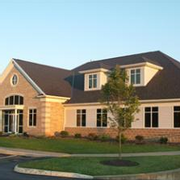What Is Spinal Decompression Therapy & How Does It Work?

Chronic pain in the lower back or spine affects millions of Americans. Spinal decompression therapy is a non-surgical procedure to relieve back, neck, or even leg pain. A traction table or other device is used to stretch the spine and provide pain relief. This type of therapy is used by chiropractors, physical therapists, or osteopaths and is safe and effective for many types of back pain.
How Spinal Decompression Therapy Works
Bulging or Herniated Discs
To relieve chronic pain and provide a healing environment for compromised discs, the spine is alternately stretched and relaxed. This creates pressure within the affected disc, which gently pulls the disc material back into place. It is also thought that this movement of the spine promotes the passage of the body’s own healing nutrients and natural pain relievers to the affected areas.
Typical Sessions
A session may last from 30-45 minutes. The patient remains clothed and lies on the traction table. The position (face up or down) depends on the type of table your doctor has, but the outcome is the same. The lower part of the table moves to provide traction for the lumbar spine. The hips are gently harnessed to the table to hold the body in the correct position to benefit from the traction. You should not feel pain or discomfort during a session.
Your practitioner will recommend a treatment plan, which may consist of up to 30 treatments administered over several weeks. Other modalities, such as electrical stimulation, may be used in your session. Stretching and gentle exercise, as well as nutritional supplements or diet changes, may be part of your treatment regimen.
Who Is a Candidate?
 Potential candidates for spinal decompression therapy include those with chronic pain in the back or neck, sciatica, or leg pain. If you have been diagnosed with a bulging or herniated disc and do not have other contraindications, this therapy may be the place to start before you decide on more invasive techniques.
Potential candidates for spinal decompression therapy include those with chronic pain in the back or neck, sciatica, or leg pain. If you have been diagnosed with a bulging or herniated disc and do not have other contraindications, this therapy may be the place to start before you decide on more invasive techniques.
You are not a good candidate for spinal decompression if you have any of the following contraindications:
- Failed back surgeries or multiple surgeries with no improvement in pain levels
- Pregnant
- Broken vertebrae or spinal fusion
- Implants in the spine or artificial discs
- Osteoporosis, or osteopenia
- Spondylolisthesis (slipped vertebrae)
- Spinal stenosis (narrowing of the bone channel of the spinal cord)
- Spinal infection or tumor
Spinal decompression therapy is a non-surgical option for many people to relieve chronic pain. With it, the body is allowed to heal gently and naturally with the assistance of traction. Evergreen Pain Management & Rehabilitation in Sheffield Lake, OH, offers chiropractic care and physical therapy for pain resulting from accidents, sports injuries, and more. Call (440) 240-9111 to book an appointment, or go to their comprehensive website to learn more about their doctors and services.
About the Business
Have a question? Ask the experts!
Send your question

